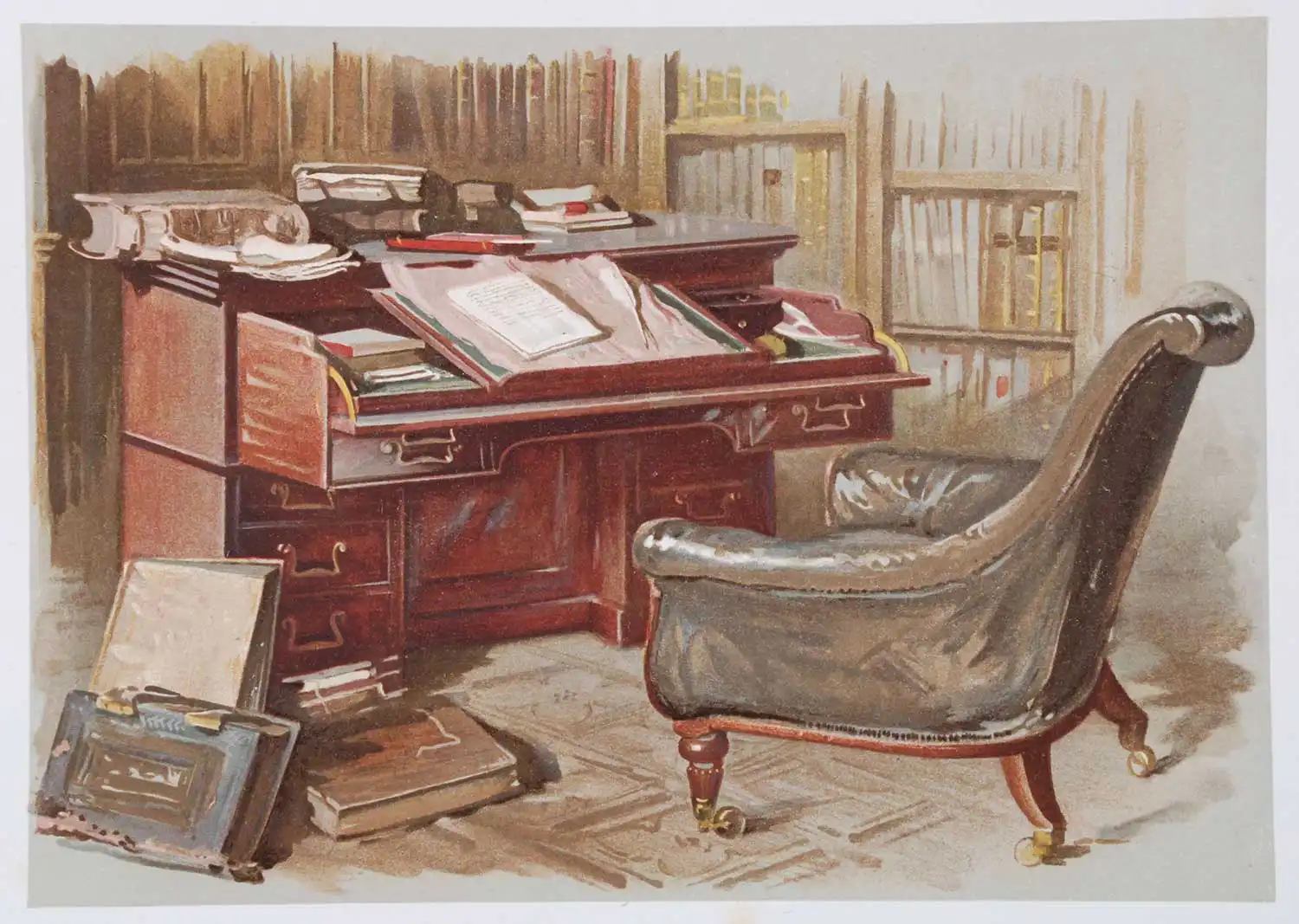Case 1
- Sir Walter Scott
![<em>Portrait of Sir Walter Scott, and five engravings in illustration of</em> The Pirate. [Edinburgh]: Royal Association for the Promotion of the Fine Arts in Scotland, 1871.](https://www.reedgallery.co.nz/__data/assets/image/0011/489476/1a.webp)
Portrait of Sir Walter Scott, and five engravings in illustration of The Pirate. [Edinburgh]: Royal Association for the Promotion of the Fine Arts in Scotland, 1871.
“Sir Walter Scott in his study”: photographic reproduction of engraving by Robert C. Bell after Sir J. Watson Gordon.
Few authors neared Sir Walter Scott’s fame in the nineteenth and early twentieth centuries. Scott’s work is memorialised in Dunedin in place names such as Waverley, Abbotsford (the name of Scott’s residence), Roslyn (a village described in Scott’s 1805 poem The lay of the last minstrel).
![<em>Portrait of Sir Walter Scott, and five engravings in illustration of</em> The Pirate. [Edinburgh]: Royal Association for the Promotion of the Fine Arts in Scotland, 1871.](https://www.reedgallery.co.nz/__data/assets/image/0011/489476/1a.webp)
Portrait of Sir Walter Scott, and five engravings in illustration of The Pirate. [Edinburgh]: Royal Association for the Promotion of the Fine Arts in Scotland, 1871.
Open image in new window

Mary Monica Maxwell-Scott. Abbotsford: the personal relics and antiquarian treasures of Sir Walter Scott. London: Adam and Charles Black, 1893.
“Sir Walter Scott’s desk and chair”: chromolithographic plate by William Gibb.
Scott’s two-storey manor house Abbotsford was built in the Scottish Borders, near Melrose, between 1821 and 1824, at great expense to himself and his publishers. Before the financial crash of 1826, Scott had astutely settled Abbotsford upon his newly-married son, rendering it beyond the reach
of his creditors. The marriage settlement granted him a life-rent, allowing Scott to remain at Abbotsford until his death in 1832.
Today, Abbotsford stands as a national monument to Scott. His study, library, drawing room, entrance hall, armouries and dining room are open to visitors.

Mary Monica Maxwell-Scott. Abbotsford: the personal relics and antiquarian treasures of Sir Walter Scott. London: Adam and Charles Black, 1893.
Open image in new window
![<em>Portrait of Sir Walter Scott, and five engravings in illustration of</em> The Pirate. [Edinburgh]: Royal Association for the Promotion of the Fine Arts in Scotland, 1871.](https://www.reedgallery.co.nz/__data/assets/image/0011/489476/1a.webp)
